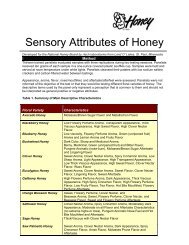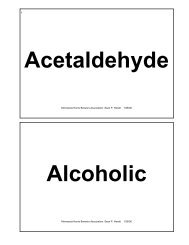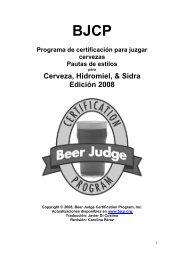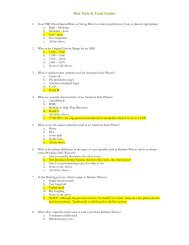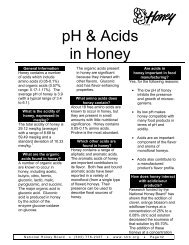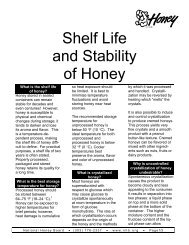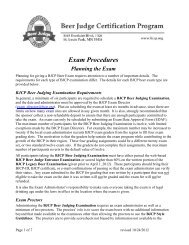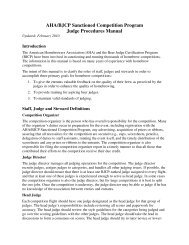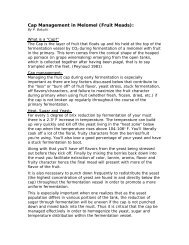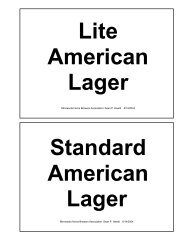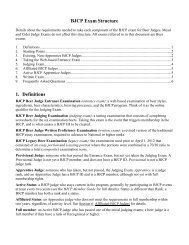You also want an ePaper? Increase the reach of your titles
YUMPU automatically turns print PDFs into web optimized ePapers that Google loves.
*Styles may include:Belgian Tripel Oktoberfest Classic American PilsnerDoppelbock American IPA Bohemian PilsnerRobust Porter Weizen German PilsnerDry StoutEnglish Pale Ale1 pointTarget statistics (starting specific gravity, final specific gravity, and bitterness in IBUsor HBUs) and color (as SRM or a textual description of the color).2 points Batch size, ingredients (grist, hops, water, and yeast) and their quantities.3.5 points Mashing, boil, fermentation, packaging, and other relevant brewing procedures.3.5 pointsExplain how the recipe fits the style's characteristics for aroma, appearance, flavor,mouthfeel, and other significant aspects of the style; and describe how the ingredientsand processes used impact this style.Example of a Complete AnswerQ: Describe and differentiate Abbey and Trappist beers. Give commercial examples of each 3 .A: The primary difference between Abbey and Trappist beers is that the latter is an appellation whichrestricts its production to the seven Trappist monasteries in the Low Countries. They are Chimay, Orval,Achel, Rochefort, Westmalle and Westvleteren in Belgium and Schaapskooi in the Netherlands. Abbey beerson the other hand, are brewed either at non-Trappist monasteries or by commercial breweries to whichAbbeys have licensed their names. Commercial examples of these include Affligem, Leffe and Grimbergen.Both Abbey and Trappist breweries are best known for the dubbel and tripel styles. The former is a tawnybeer with an OG in the 1.060-75 range, 6-7.5% alcohol, and enough bitterness to balance, approximately 15-25 IBUs. The color is generally deep ruby to brown and derived from both Belgian specialty malts andcaramelized candi sugar. The flavor is dominated by a full-bodied malty sweetness reminiscent of plums,raisins and black currents. Ester levels are generally subdued by Belgian standards, but some examples dohave moderate bubble-gum or banana esters. Tripels, on the other hand, are much paler in color at 3-5 SRM,but have higher OG (1.075-85) and alcohol levels (7.5-9 %). The malts used are almost entirely pilsner, withlight candi sugar used to increase the alcohol content and prevent the beer from being too cloying. Hop ratesare higher at 25-38 IBUs, with some noble hop flavor and aroma acceptable. The ester levels are often moreassertive in this style, though the increased alcohol content should be subtle. Westmalle Dubbel and Tripel areclassic examples of these styles.Some Trappist breweries also produce beers which would better fit into the strong ale category due to highester levels or unusual brewing procedures. In the latter category are Chimay (Premiere, Cinq Cents andGrand Reserve) and Rochefort (6, 8 and 10) brews, which have very distinctive signatures from the yeast.One of the most unusual beers in Belgium is made by Orval, the only (readily available) beer brewed by thatmonastery. It has a moderate gravity in the 1.055-60 range, is dry hopped with Styrian Goldings andundergoes a secondary fermentation with a mixture of five yeast strains that includes Brettanomyces. As the3 This question is NOT used on the exam.33



